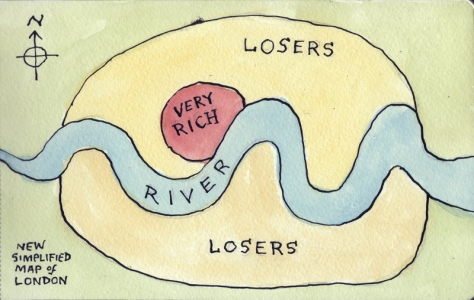
Mnemosyne (1881), a pre-Raphaelite interpretation of the goddess Memory by Dante Gabriel Rossetti (Photo credit: Wikipedia)
Mnemosyne
Xô mulher, tô tentando trabalhar!!! >: (será que sou a única que tem problemas de concentração por causa de memórias que insistem em me interromper??)
Mnemosine ou Mnemósine era uma das Titânides, filha deUrano e Gaia e a deusa que personificava a Memória.[1] Ela teve de Zeus as Nove Musas:
Era aquela que preserva do esquecimento. Seria a divindade da enumeração vivificadora frente aos perigos da infinitude, frente aos perigos do esquecimento que na cosmogonia grega aparece como um rio, o Lete, um rio a cruzar a morada dos mortos (o de “letal” esquecimento), o Tártaro, e de onde “as almas bebiam sua água quando estavam prestes a reencarnarem-se, e por isso esqueciam sua existência anterior”.

Mnemosyne + Jupiter – Marco Liberi (1640-1685)
Go away woman, I’m trying to work here!!! >: (am I the only one who has trouble concentrating because memories keep on intruding??)
She was the personification of memory in Greek mythology. The titaness was the daughter of Gaia and Uranus and the mother of the nine Muses by Zeus:
In Hesiod‘s Theogony, kings and poets receive their powers of authoritative speech from their possession of Mnemosyne and their special relationship with the Muses.
Zeus and Mnemosyne slept together for nine consecutive nights, thus birthing the nine Muses. Mnemosyne also presided over a pool[3]in Hades, counterpart to the river Lethe, according to a series of 4th century BC Greek funerary inscriptions in dactylic hexameter. Dead souls drank from Lethe so they would not remember their past lives when reincarnated. Initiates were encouraged to drink from the river Mnemosyne when they died, instead of Lethe. These inscriptions may have been connected with Orphic poetry (see Zuntz, 1971).
Similarly, those who wished to consult the oracle of Trophonius in Boeotia were made to drink alternately from two springs called “Lethe” and “Mnemosyne”. An analogous setup is described in the Myth of Er at the end of Plato‘s Republic.
The mythological titaness Mnemosyne embodied for the ancient Greeks the principle of Memory. Long before the invention of script, she was patroness of oral history and keeper of the memories of the past for future generations.
The myths surrounding Mnemosyne link the concepts of forgetting and remembering closely together. Mother of the nine Muses, Mnemosyne aided those who died by offering them a cup of forgetfulness in the Underworld. Drinking from this cup, they could forget the old life and move into the new unencumbered. Those who descended to consult the oracle in Mnemosyne’s temple were required to drink from two cups – first, from the cup of forgetfulness (to forget what they had witnessed) and then from the cup of memory (so they could recount what the oracle had revealed to them).
The mythology of Mnemosyne reminds us that in order to honour Memory, we sometimes need to forget aspects of what we have witnessed. Some things are better forgotten in the telling of the tale for future generations.
Share this: Compartilhe isto:






























































































